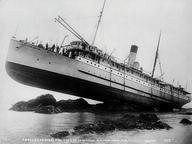Quiz Answer Key and Fun Facts
1. The timing of the Spanish Flu pandemic was not a coincidence. When did it occur?
2. The influenza pandemic infected over 500 million people worldwide. What proportion of the world's population became infected?
3. The name "Spanish Flu" is a misnomer. Why was it given this name?
4. Before a pandemic can be declared, there must be actual demonstrated cases beforehand. Given the timing, from the options given, where was location 'marked' as the start of the epidemic?
5. What was the obvious difference between the second wave of Spanish Flu which started in August 1919 compared with the first wave in 1918?
6. During the second wave in August 1919 it became apparent that the legacy of war was having an effect on the severity of the pandemic. Unusual for an Influenza epidemic, a specific cohort of people succumbed and died. What was the age group of this cohort?
7. In January, 1919, a third wave of Spanish Flu spread around the globe. From which unlikely Southern Hemisphere country did it start?
8. As there were no anti-influenza vaccines available at the time of Spanish Flu, public health measures were the only effective way of containing the infection. Which one of the following was *NOT* a public health measure implemented to try to slow down the virus?
9. Despite the infection of over 500 million lives world-wide, The Spanish Flu Pandemic became known as "The Forgotten Pandemic".
10. Epidemics leave legacies. Pandemics leave bigger legacies. Which one of the following was not one of the lasting effects of Spanish Flu?
Source: Author
1nn1
This quiz was reviewed by FunTrivia editor
gtho4 before going online.
Any errors found in FunTrivia content are routinely corrected through our feedback system.
